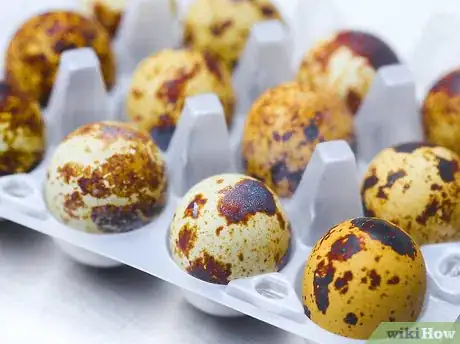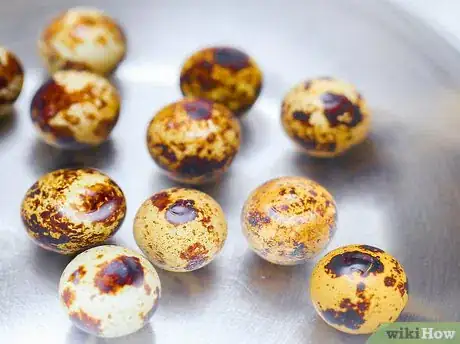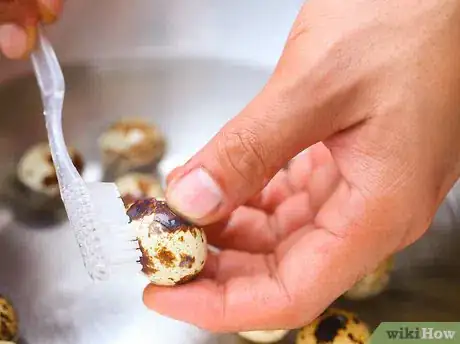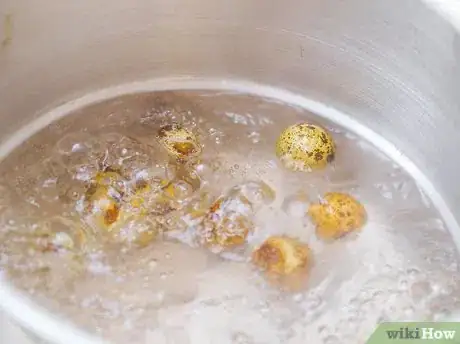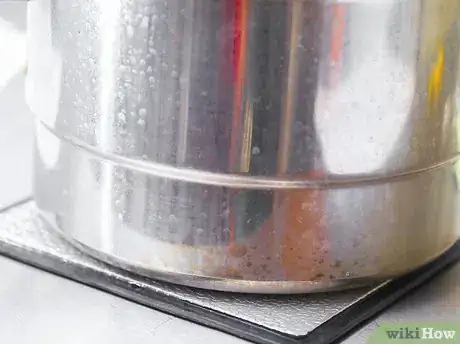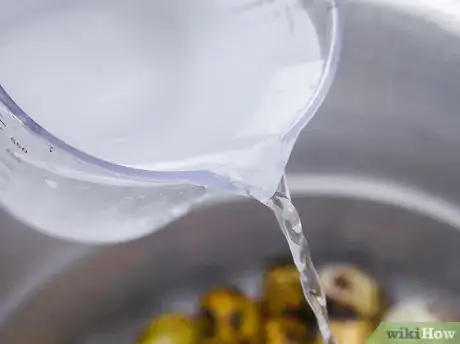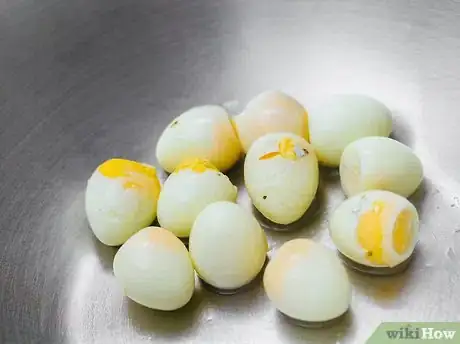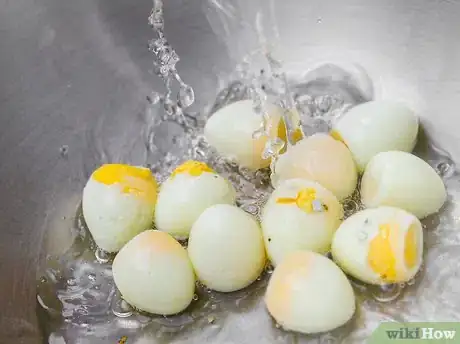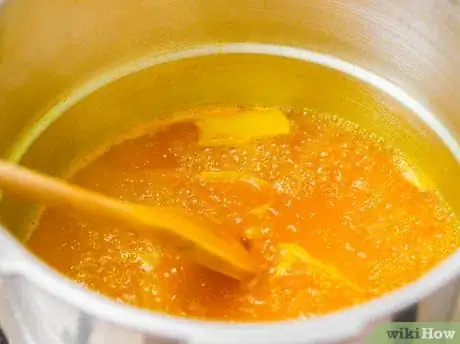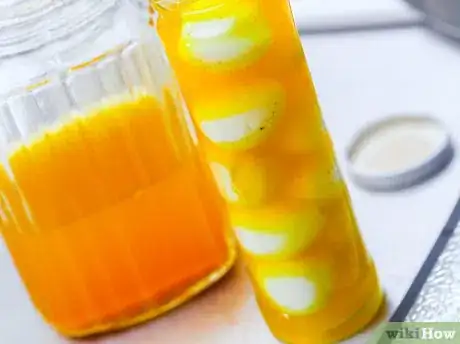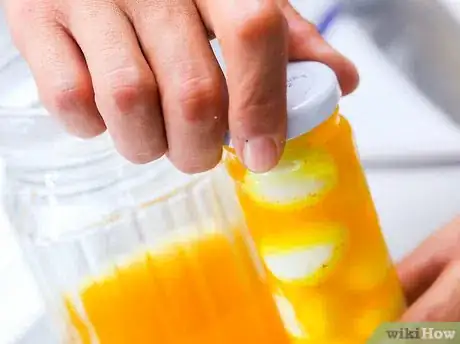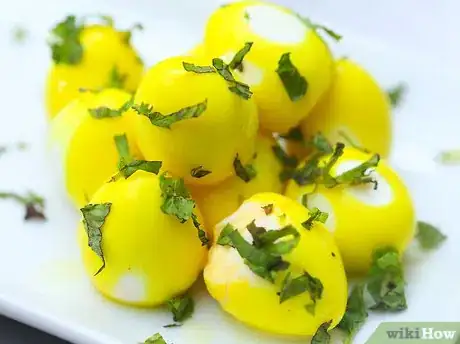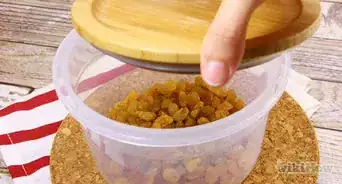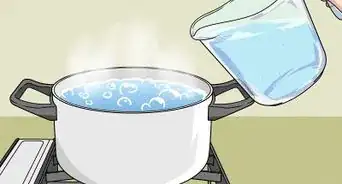wikiHow is a “wiki,” similar to Wikipedia, which means that many of our articles are co-written by multiple authors. To create this article, 11 people, some anonymous, worked to edit and improve it over time.
There are 8 references cited in this article, which can be found at the bottom of the page.
The wikiHow Culinary Team also followed the article's instructions and verified that they work.
This article has been viewed 102,252 times.
Learn more...
Quail eggs are considered a delicacy because of their unique, delicious flavor and the fact that they're harder to come by than regular eggs. Their slightly more fragile nature makes them perfect for pickling; you can use a sweet, savory, beet-flavored, or any other mixture of your choice to give them the taste you're craving. Once you learn how to pickle quail eggs, you can serve them at parties, try to sell them, or even just enjoy them as a snack on your own. If you enjoy the process of pickling, try making regular pickles.
Ingredients
Purple pickling mixture:
- 2 dozen quail eggs
- 1/2 cup cider vinegar
- 1/2 cup water
- 1/2 cup peeled and grated beet
- 4 tsp granulated sugar
- 1 tsp nutmeg
- 2 tsp kosher salt
- 2 tsp pickling spice
- More kosher salt for serving
Hot and spicy pickling mixture:
- 2 dozen quail eggs
- 1 1/2 cup rice vinegar
- 1/4 cup water
- 2 tsp cane syrup or molasses
- 1 tbsp whole peppercorns
- 1 tsp whole allspice berries
- 2 bay leaves
- 1 tsp chile flakes
- 2 sprays green coriander seeds
- 1 tsp salt
Golden pickling mixture:
- 2 dozen quail eggs
- 1 1⁄2 cups cider vinegar
- 1/2 cup water
- 2 tsp honey
- 2 tsp peppercorns
- 2 tsp pickling salt
- 1 tsp ground turmeric
- 1 tsp whole allspice
- 1/4 tsp celery seeds
- 1 cinnamon stick
Steps
Preparing the Eggs
-
1Inspect the eggs for nicks and cracks in the shells. Discard any eggs with openings in their shells.
- You can find high-quality quail eggs in many higher-end grocery stores or farmer's markets.
- Some people prefer to let their eggs sit in the fridge for 1-2 weeks so they "loosen up" a bit and are easier to peel.
-
2Soak the eggs for several minutes in a pot of warm water.Advertisement
-
3Clean the quail eggs by gently scrubbing the shells.
- Just remember that quail eggs are a bit more delicate than regular eggs, so you should be careful when handling them so they don't crack.
Cooking the Eggs
-
1Put the eggs in a pot of cold water. Allow the eggs to sit and obtain room temperature before boiling.
- The water should reach about 1 inch (2.54 cm) above the top of the eggs.
- You can also use a saucepan instead of a pot.
-
2Bring the water with the eggs to a boil.
-
3Remove the pot of eggs from the heat source. Some people think you should remove the eggs immediately after they boil, while others say they should boil for at least three minutes. Others also recommend removing the eggs from the heat as soon as they boil and letting them sit, and therefore continue to cook, for another three minutes. The important thing is not to overcook them or they will get too rubbery once you place them in the brine.
- If you let them sit for a few minutes, you can stir them carefully during this process.
-
4Drain the water from the pot of eggs.
-
5Replace the water in the pot with white vinegar if you'd like to make it easier to peel the eggs. Pour the vinegar to at least 1 inch (2.54 cm) above the top of the eggs.
- Leave the eggs in the white vinegar for 12 hours to soften the membrane and make peeling an easier task.
- If you do this, then you should stir the eggs in the pot every few minutes.
- Rinse the vinegar from the eggs with fresh water when you're done.
- Of course, you can skip this step and move right on to pickling the eggs, if you don't have the patience for it.
-
6Set the eggs in cold or even ice water momentarily before peeling. This often makes the peeling of the tough shell and membrane easier.
-
7Peel the shell membranes from the quail eggs to be pickled. You can discard those shells in your compost bin.
-
8Repeat the rinsing of the eggs after the shells are removed to rid the egg of small shell pieces.
- Be careful about not breaking the yolk of the eggs as you handle this. This can lead that pickling mixture to get a bit murky.
Pickling the Eggs
-
1Put the eggs into canning jars. The size of jar you choose depends on your needs. Make sure that the jars have been properly sterilized and that they have lids that seal tightly. You can pat the eggs dry with a paper towel before transferring them to the canning jars.
-
2Make the pickling mixture. You can make the mixture while preparing the eggs, or after you've made them. Each mixture will be made slightly differently, so it's important to follow directions when you choose your mixture. Here's how you can make each of the mixtures here:
- To make the purple pickling mixture, simply combine all of the pickling ingredients in a small pan and bring them to a boil over medium heat. Continue to stir the mixture to dissolve the salt and sugar. Let the mixture cool to room temperature, which should take 30 minutes or so.[1]
- To make the hot and spicy pickling mixture, just bring the ingredients to a boil in a saucepan and set them aside for 30 minutes to let them cool. When the time comes to pour the mixture into the eggs, use a chopstick to poke the bay leaves and coriander seeds deep into the jar with the eggs.[2]
- To make the golden pickling mixture, simply place all the pickling ingredients in a medium saucepan, bring them to a boil over medium heat, cover them, reduce the heat to low, and let the pan simmer for 30 minutes. Then, chill the liquid in the fridge for 20 minutes or so and then it's good to go.[3]
-
3Cover the quail eggs with a hot pickling mixture. Carefully pour the mixture over the eggs. You can use a mesh strainer or a cup measurer with a little spout so you don't dump all of the liquid over the eggs at once.
- Wipe off the lids of the pickling mixture before closing the lids.
-
4Allow the eggs and mixture to sit and cool in the jars.
-
5Cover the jar with a lid. For an added measure, you can process the jars in hot water for 10 minutes before you set them aside to cool.
- Once you've sealed the lids, you can give the jars a gentle shake to make sure that the spices are distributed evenly.
- You can even turn the jars upside down and then right side up again if you can do so carefully.
-
6Refrigerate the eggs for at least 1 day before eating them. How long you refrigerate them for depends on your preferences and the mixture you're using.
- For the purple mixture, you can refrigerate it for at least a day and up a week.[4]
- For the hot and spicy mixture, it's best if you store it in the fridge for 2 weeks before eating it.
- For the golden egg mixture, you should store it for at least a couple of days before eating it. You can eat it for up to a month after pickling it.[5]
-
7Serve. Enjoy these tasty eggs on their own, sprinkled with a dash of parsley, or with a bit of coarse salt.
Community Q&A
-
QuestionI pickled some quail eggs, but did not seal the lids on the jars. How long will they last in the refrigerator?
 Community AnswerYears. Vinegar is a preservative. I once found some pickled eggs that had sat on a basement shelf for at least 10 years, and they were delicious.
Community AnswerYears. Vinegar is a preservative. I once found some pickled eggs that had sat on a basement shelf for at least 10 years, and they were delicious.
Things You'll Need
- Quail eggs
- Pot
- Warm water
- Cold water
- Heat source
- White vinegar
- Pickling spice
- Canning jars
References
- ↑ http://www.chow.com/recipes/30256-pickled-quail-eggs
- ↑ http://www.chow.com/recipes/30256-pickled-quail-eggs
- ↑ http://www.motherearthnews.com/real-food/golden-pickled-quail-eggs-recipe-zb0z12zalt.aspx#axzz3J4TpZnNq
- ↑ http://www.chow.com/recipes/30256-pickled-quail-eggs
- ↑ http://www.motherearthnews.com/real-food/golden-pickled-quail-eggs-recipe-zb0z12zalt.aspx#axzz3J4TpZnNq
- http://www.quail-egg-recipes.com/pickle.html
- http://www.thatquailplace.com/smf/index.php?topic=2292.0
- http://www.cooks.com/rec/view/0,1616,156168-226196,00.html
- http://www.chow.com/recipes/30256-pickled-quail-eggs
About This Article
To pickle quail eggs, first clean the eggs by soaking them in warm water and gently scrubbing their shells. Then, put them in a pot of cold water and bring them to a boil. Take them off the heat and peel both the shells and membranes from the eggs. Next, rinse the eggs and put them in canning jars. Bring all the ingredients for your pickling sauce to a boil on the stove. Then, cool the sauce to room temperature before pouring it over the eggs. Let your jars cool completely before putting the lids on. If you want to learn how to make different pickling liquids, keep reading the article!
